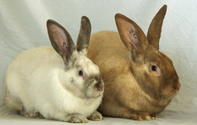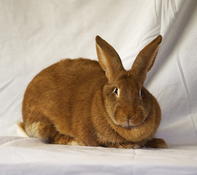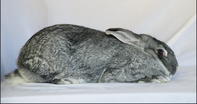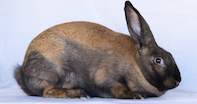Pure-bred Meat Rabbits
In South Africa we have a variety of breeds to choose from for meat production. Breeds are created for a specific purpose and the closer the rabbit is to its breed standard the better the end product will be so it is important to choose the right breed for its final purpose.

When breeding for home consumption only it does not matter that each carcass is slightly different, but once excess animals are sold to provide an income, it is essential that the product sold offers the buyer uniformity.
This can only be achieved when dealing with a purebred animal. Stud stock sales are a very good way of boosting income from your breeding rabbits. If the animals are of a high quality, better prices can be charged for stock sold as foundation stock to a new breeder.
The pelt market also requires uniformity to achieve top prices. A farmer who produces quality matched pelts can either produce high value products for sale or can sell matched pelts for which a higher price would be paid than a batch of pelts unmatched pelts. Only pure bred rabbits can ensure this uniformity.
Rabbit Breeds for Meat Production
Before choosing a breed, consider the farming method most suited to your requirements.New Zealand Whites
Internationally New Zealand Whites have proved to be consistent meat producers. They are best suited to commercial production methods of farming. They are good mothers and can raise between 5 – 8 kits (babies) per litter and up to eight litters per year, when farmed under optimum conditions.
This method of farming requires high levels of commercially produced rabbit pellets. Young stock is ready for slaughter at 10 - 14 weeks of age and produce a low value pelt. Looking at producing rabbits for mainly home and community consumption, feeding mainly roughage, this is not practical choice.
New Zealand Reds

The New Zealand Red has a rich red pelt, closely resembling the colour of the Impala buck. They are more easily adapted to a high roughage diet and a slower production rate.
The does (female rabbits) can produce 5 – 8 kits per litter and average four litters per year. The young stock can be fed on some grain or rabbit pellets, but mainly on vegetable offcuts and good quality hay. They will be ready to slaughter from 16 weeks of age and produce a good quality pelt.
Chinchilla Gigantas

Californians
This is one of the top commercial breeds, farmed extensively in the USA for commercial meat production. They have very similar needs to the New Zealand White and also produce a white pelt.Cinnamons
